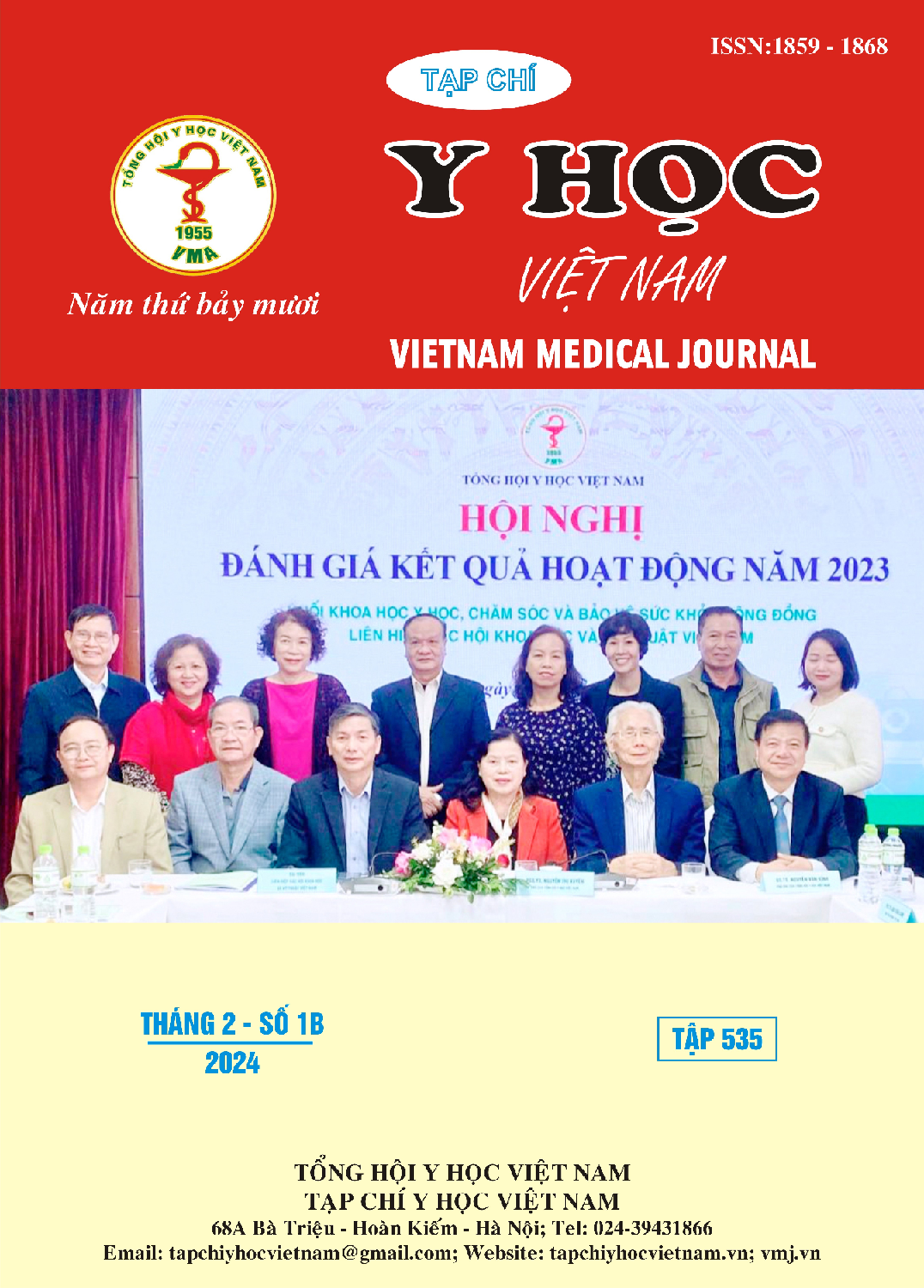SURVEYING CHANGES IN TEAR OSMOLALITY IN PATIENTS AFTER PHACOEMULSIFICATION
Main Article Content
Abstract
Background: Many studies have shown that phaco surgery can change tear film morphology, and can increase tear osmolarity if not treated promptly, causing a decrease in the quality of surgery and the patient's vision. Besides, tear osmolarity is considered the "gold" standard in evaluating tear stability to diagnose dry eyes. Because of this, we studied the effect of phaco surgery on tear osmolarity. Objectives: To describe the change of tear osmolality after phacoemulsification and determine the correlation between tear osmolarity and Schirmer test. Materials and method: Longitudinal, descriptive study on 50 patients who under-went cataract surgery were included in a prospective study at the Eye Hospital in Phu Yen from May 2023 to November 2023. Results: Preoperative OSDI score was 7.00 ± 4.19, 1 week after surgery increased to 21.75 ± 7.89, p < 0.001. But after surgery 1 month and 3 months decreased to 18.44 ± 8.46 and 16.20 ± 10.99 with p < 0.001. Preoperative tear osmolarity was 305.5 ± 14.16 mmOsm/l, after surgery increased to 323.78 ± 16.73 mmOsm/l, p < 0.001. But after surgery 1 month and 3 months decreased to 319.3 ± 19.56 mmOsm/l and 315 ± 23.2 mmOsm/l, p < 0.001. Schirmer test value before surgery was 17.98 ± 5.36 mm, 1 week after surgery decreased to 12.42 ± 6.38 mm with p < 0.001. But after surgery 1 month and 3 months gradually increased to 14.62 ± 5.08 mm and 16.58 ± 5.12 mm, p < 0.001. There is a negative correlation between tear osmolarity and Schirmer test value at 1 week, 1 month and 3 months after surgery with r1 week = - 0.556; r1 month = - 0.675; r3 months = - 0.605 and p < 0.001. Conclusions: Changes in tear osmolarity in patients after surgery are common, they gradually recover to the original level in patients who did not have dry eyes before. Loss of tear osmolarity is not a concern if the patient is informed and is given artificial tears for at least 3 months postoperatively to minimize symptoms caused by postoperative dry eye. There is a significant negative correlation between tear osmolarity and Schirmer test value.
Article Details
Keywords
osmolality; phacoemulsification
References
2. M André A, Torricelli, Priscila Novaes, Monique Matsuda, et al. (2013), "Correlation Between Signs and Symptoms of Ocular Surface Dysfunction and Tear Osmolarity With Ambient Levels of Air Pollution in a Large Metropolitan Area", cornea, 32 (4), tr.11-15.
3. C. Belmonte, M. C. Acosta, J. Gallar (2004), "Neural basis of sensation in intact and injured corneas", Exp Eye Res, 78 (3), tr.513-525.
4. E. Elksnis, I. Lace, G. Laganovska, et al. (2019), "Tear osmolarity after cataract surgery", J Curr Ophthalmol, 31 (1), tr.31-35.
5. T. Igarashi, H. Takahashi, M. Kobayashi, et al. (2021), "Changes in Tear Osmolarity after Cataract Surgery", J Nippon Med Sch, 88 (3), tr.204-208.
6. Ratna Sitompul, Sancoyo. Grace S, Hutauruk. Johan A, et al. (2008), "Sensitivity Change in Cornea and Tear Layer due to Incision Difference on Cataract Surgery with Either Manual Small-Incision Cataract Surgery or Phacoemulsification", Cornea, 27 (8), tr.13-18.
7. P. Garg, A. Gupta, N. Tandon, et al. (2020), "Dry Eye Disease after Cataract Surgery: Study of its Determinants and Risk Factors", Turk J Ophthalmol, 50 (3), tr.133-142.
8. N. Kasetsuwan, V. Satitpitakul, T. Changul, et al. (2013), "Incidence and pattern of dry eye after cataract surgery", PLoS One, 8 (11).


